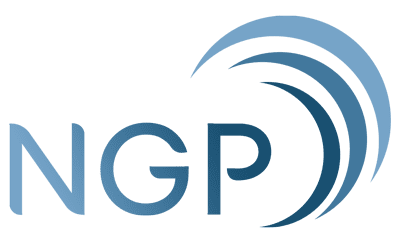Advancements in technology, growing healthcare needs, and fluctuations in the economy all affect the constantly-adapting healthcare industry.
These impact not only the way healthcare services are provided. They also change the way healthcare providers use public relations strategies to outshine their competitors, reach a broader audience, and match the needs of the times.
In this article, we’ll help healthcare providers like you understand how changing media landscapes affect PR, and what global healthcare PR trends you need to look out for in an ever-changing media landscape.
How Healthcare PR Adapted to Changing Media Landscapes
Back in the day, if a healthcare company wanted to earn the public’s trust, it had one major goal in mind: to earn media coverage.
Imagine being featured in a reputable local or national newspaper. That would give your brand a huge credibility boost, and a stamp of approval from a reliable third party. It effectively convinced your audience that you’re the company to look to. It was the gold standard for gaining an audience’s trust.
But not anymore. Today, the platform to be on is the Internet.
Going Digital
Unlike the hard-to-get newspaper coverage or TV show appearance, the internet is a free-for-all space. Both patients and healthcare providers can use it.
This has led to an explosion in the amount of information online, as well as the rise of social media platforms like Facebook, Instagram, and YouTube. Now, even media outlets have gone digital, and in order to be seen or heard, you have to be on the digital bandwagon.
What’s more, 60% of all Internet users in the Philippines go online to learn about their health issues and health products.
Medical practices, therefore, have had to shift gears and go digital as well. Information is now shared through owned and affiliate websites, blogs, and social media, in order to address a huge demand for credible information.
Bridging Patients and Health Providers
The prevalence of social media has also led to a closer connection between patients and healthcare providers. With so much information online, it has become challenging to determine reliable information from false.
Patients now go to medical practitioners armed with information to verify and better learn about health issues, possible treatments, and other medical advice.
To catch this vast potential market, medical practices have gone beyond clinics and used digital tools to provide patients with direct access to medical experts. This has made educational content and direct communication channels through chatbots and social media all the more crucial in healthcare PR practices.
Search Engine Optimization
There are far too many medical practices today and only so little space in the first few pages of search engine results. It’s not enough that you’re out there. You have to be tactical about developing content and executing PR strategies if you want your audience to see you.
This is where optimizing your website and content for SEO comes in. After all, what use is messaging when it doesn’t reach its intended audience? SEO allows your practice to appear right when your audience searches for something that you provide–and that’s just the start.
Healthcare PR Trends & Challenges
Healthcare PR is likely going to evolve even more, as digital media is only ever going to keep changing. Because of this, PR strategies need to meld smoothly with new trends in the healthcare industry, as well as overcome the challenges that these changes bring, in order to succeed.
Personalization in Messaging
There is no such thing as a one-size-fits-all PR strategy, especially for today’s audience. People listen to personalized messaging–narratives that are catered to a specific audience and crafted for a niche, and they will continue to do so.
If you’re trying to level up your PR efforts, therefore, you’ll want to focus on knowing what your audience cares about and sending your message through channels where your audience exists. This also entails crafting experiences designed explicitly around your target audience.
These experiences involve every touchpoint with your audience, from the time they find you on Google or through social media discussions, to your first online conversation, to an actual clinic visit.
Patient-Centric Strategy
Effective healthcare PR will also continue to be patient-centered rather than focused on the medical practice. It means PR that’s driven by empathy for the patient and veers away from treating patients as mere consumers.
This works partly because of the need for a more personal approach in PR. People have had enough of canned messages and your typical hard sell. In fact, it has been so overused that 96% of consumers don’t trust traditional advertising at all.
On the other hand, a patient-centric approach in PR makes it more about what you as a medical practitioner can do for a patient who needs help. It effectively evokes emotion, promotes trust, and helps establish loyalty.
Related: DOH Distributes Free Vaccines Against Cervical-Linked Diseases
Rising Need for Telehealth
The COVID-19 pandemic created a new way for patients to access medical attention via virtual meetings. Telehealth consultations were much needed during a time when people didn’t want to risk contracting disease.
But this mode of consultation continues to be vital today. Telehealth consultations are cost-effective and less time-consuming. They also make it possible for patients in remote regions of the country or those who have no means to travel to seek medical help.
According to the Department of Health, half of Filipinos don’t have access to nearby healthcare facilities. Telehealth is a step towards bridging this gap–all while creating positive press about your practice.
Innovative Care and Technology
Healthcare PR is integral for spreading information and educating patients on advancements in medical technology and patient care.
Sadly, innovative therapies and treatments are relatively little known among Filipino patients. It’s partly because they aren’t as widely available as we hope them to be, but also because of the huge opportunity for discussion on innovations that medical experts and healthcare providers can yet take advantage of.
Healthcare PR helps medical practitioners educate their audience on available treatment options and even encourages patients to get help despite stigma in society or what many may consider to be taboo.
These new trends in healthcare PR services are opportunities to provide better care to more people. But they also bring with them unique challenges. Perhaps the biggest of these is the hurdle of breaking down complex messages and communicating them in a way that resonates with your audiences and inspires action.
The good news? That’s exactly what we at NGP-IMC do. We can help you tell your story through impactful, personalized communications and integrated marketing campaigns, so you can continue to do what you do best: provide care.
Get in touch with us to know more.
Jossaine Nunez is a freelance article writer, blogger, and SEO-driven maven. While her true passion lies in writing fiction, her love for storytelling extends to helping brands convey their message in ways that are both engaging and helpful for attaining their business goals.
Jossaine’s interests in writing particularly about people, for people – which translates to brand audience engagement – stems from her experience as the Editor-In-Chief of Siliman University’s The Weekly Silimanian, which published slices of life and educational pieces surrounding university life. Her piece, A Review of Leoncio Deriada’s People on Guerrero Street, published in the Silliman Journal on discussions and investigations in the humanities and sciences, earmarks her foray into the world of writing about, and writing for, humans that make the world go round.


